This viral creator is actually a brand
Olivia Unplugged has garnered 8M views in the past month.
When a post from the account Olivia Unplugged shows up on your TikTok For You Page, it might not be immediately clear that a brand is behind it. The creator Olivia is often standing in front of a green whiteboard while outlining the downsides of scrolling. The profile photo on the account is of Olivia, not a logo. There’s no overt product messaging. Some of the most popular topics that Olivia has covered include “How to stop feeling tired all the time”, “How to cure your phone addiction”, and “How to find a hobby in 5 seconds”. That first one racked up an impressive 2.6M views.
It’s only once you’ve watched a few of Olivia’s videos that you might notice an app called “Opal” is sometimes weaved into the storyline. Then, when you finally make your way to the bio, you’ll realize that it reads “Powered by Opal” with a link to download.
As platforms continue to prioritize entertainment, brands are finding clever ways to break through—creating content that leads with conversation, not conversion. For Opal, a popular focus app, that meant spinning off an entirely new account that educates scrollers on screen time. In the last 30 days, the posts have garnered 8M views.
For today’s newsletter, I am talking to Olivia Yokubonis. She’s the Social Media Manager at Opal and, of course, the creator behind Olivia Unplugged. We talk about the process of starting this secondary account, if the content has led to app downloads, and why you should “stop expecting out-of-the-box results while staying inside the box.”
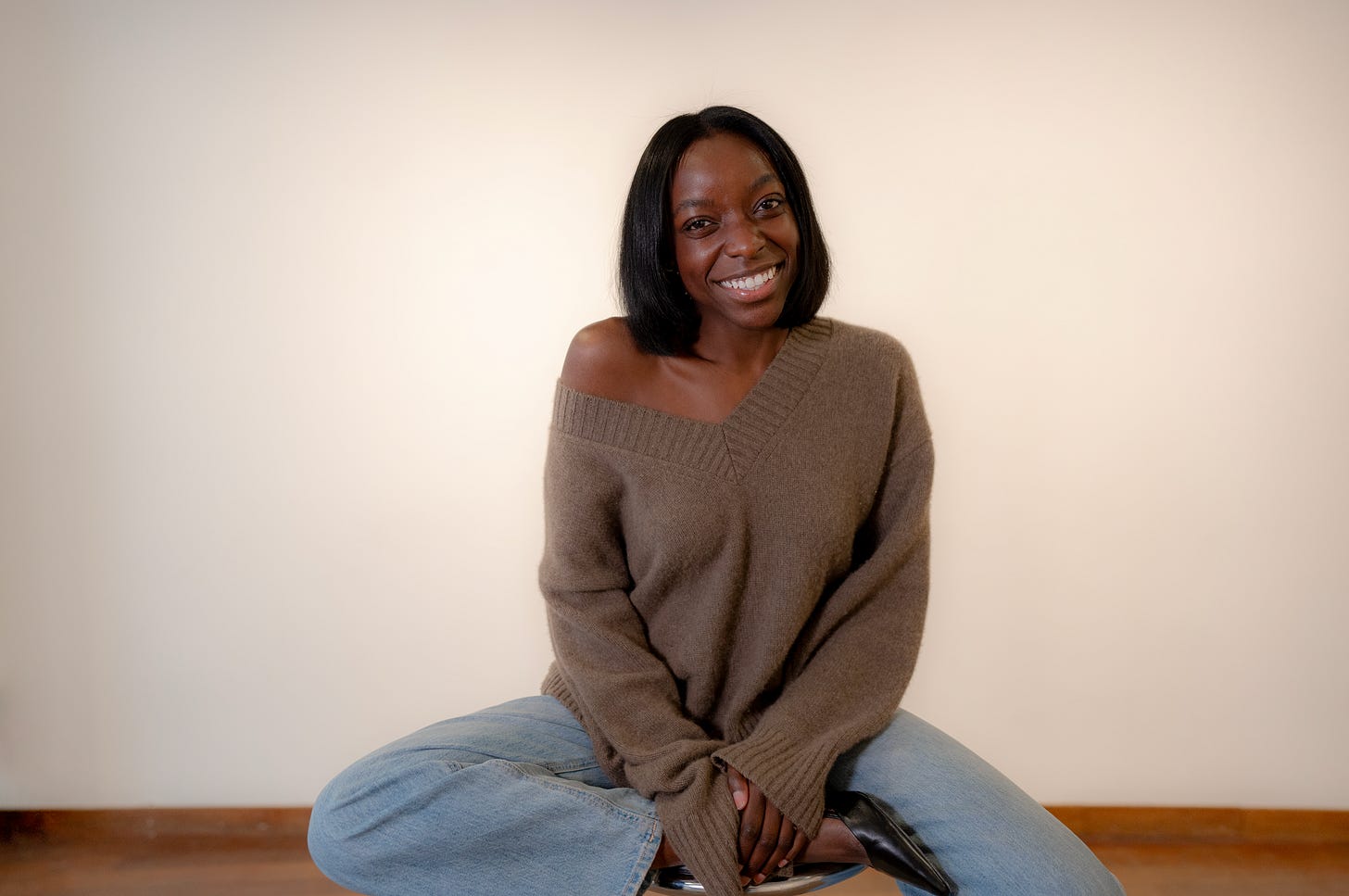
Rachel Karten: How would you describe Opal’s overall social media strategy?
Olivia Yokubonis: Our social strategy is rooted in a general principle the whole company abides by: move quickly and ship often. We don’t get bogged down in long decks or over-engineered strategies, which was a learning curve for me. Instead, we stick to a few core values that guide everything we do. If we have an idea, we execute it, test it, and learn from it. If it flops, that’s data. If it works, we build on it. Another guiding question we ask is: is this something any other brand could do? If the answer is yes, we move on.
RK: Can you talk to me about starting Olivia Unplugged? Where did the idea come from?
OY: The idea for Olivia Unplugged actually came from Marjolaine Chirpaz, our Brand + Organic Growth Lead at Opal, reminding me to go back to what excites me in the first place about social media.
When I applied for the role, I submitted a video essay alongside my application sharing how Opal changed my life and what I’d do with their socials. TikTok has always been a space I’ve loved, so she encouraged me to return to what felt natural: storytelling straight to camera.
We decided to test it out as brand owned account, and I challenged myself to post every day for 30 days. My very first video was about starting a “cult” of people obsessed with focus and reclaiming their time, and that is still the same message in every video. At the heart of it, we knew TikTok rewards storytelling. The best way to win is to be human and provide value, and that was my goal from the start.
RK: How does the strategy for Olivia Unplugged differ from the Opal brand account?
OY: Olivia Unplugged is really an incarnation of Opal. People don’t connect with logos, they connect with people and the stories they tell. That’s where the strategy differs.
Opal’s social accounts position us as the leading voice in the screen time and focus space, and Olivia Unplugged is simply doing it by showing up as a real person, telling stories, and making the mission feel human and relatable.
If we relied only on a traditional brand account, we’d never reach the scale we’re aiming for. Narrative amplification is the key, different voices, formats, and platforms all working together to carry the message as far as possible.
RK: Talk to me about some of the planning that goes into an Olivia Unplugged video? They are quite in-depth and well-researched!
OY: It’s a pretty natural process for me because I’m in the “research as a hobby” camp. I’ve always loved neuroscience, psychology, and the art of productivity, so they are exciting for me to create. The videos definitely take time, which is why I usually only post about three a week, but what makes it doable is that we’re so close to the problems people face with focus. Distractions, burnout, attention struggles…they’re universal, so there’s always a relatable entry point.
Most ideas start casually from a conversation at lunch, an article dropped in Slack, or even a random frustration of my own. From there, I Google like my life depends on it. I like to keep it based in peer-reviewed studies, I am a regular on PubMed. If I need very specific data points, I’ll lean on AI to help surface them.
Once I’ve gathered enough data, I’ll sketch out a script, but when it comes time to film, I kind of wing it. That’s why my green whiteboard often looks like structured chaos.
RK: I actually noticed that the first video to really gain traction on the account was the first one that used that green whiteboard. Now lots of your videos feature it. Did that storytelling tool just come about through experimentation? What else have you noticed works well?
OY: The infamous green board. The funny thing is, we never even bought it. It was literally sitting on the street in Paris after a neighboring VC fund moved offices, and somehow we got the heavy thing into ours. It’s objectively a terrible board, but somehow it has magic.
I first used it after seeing a video I loved that was concise, educational, and compelling, and thought, why not try it? I didn’t expect it to resonate the way it did, but it makes the message feel instantly digestible, even if you can barely read what I’m writing. Now we even get comments like, “My show is on!!!,” because people recognize the green board and know exactly what’s coming.
And yes, it definitely came out of experimentation. I had already posted around 40 other videos before that one took off, and it was proof that persistence pays off.
Beyond the board, I’ve noticed that topics around sleep, burnout, and joy always strike a chord. People are tired, people are unhappy, and content that speaks directly to that reality tends to resonate most.
RK: We’re seeing more accounts that are “powered” by brands. Subtle ways into audience attention. Have you seen an uptick in downloads or interest in the app from Olivia Unplugged content?
OY: Absolutely. That’s one of the most exciting parts: we’re resonating with people and they’re actually taking action. Beyond the comments like “you’re making me want to delete TikTok” or “I need to get off my phone,” we’re seeing people genuinely reevaluate their relationship with technology. Many of them are installing Opal as a result and we’ve been able to track those installs.
Our baseline goal with Olivia Unplugged was to scale reach and visibility. The fact that it’s also generating installs, new trials, and revenue is the cherry on top. It shows us that the content is moving people to change their behavior in a real way.
RK: Have you thought about starting an Olivia Unplugged Instagram account?
OY: I’ve gotten so many comments asking if I’m on Instagram, or if they can find Olivia Unplugged on a podcast or on YouTube, but the answer is no. For me, TikTok is my playground. It’s the platform where I feel most comfortable, where I enjoy creating, and where this whole thing makes sense.
The magic of it, though, is that it doesn’t have to just be me. We are finding people who can replicate this in their own way, in their own style, on different platforms. Someone out there feels the same way about YouTube, or Instagram, or Twitter, or even Substack as I do about TikTok, and if they also care deeply about focus, they can carry this mission into those spaces. P.S. reader, if that’s you, reach out to me!
There won’t be an Olivia Unplugged Instagram, there will be something even better. You’ll just keep seeing me behind the scenes on Opal’s brand account.
RK: If you had to sum up your personal social media philosophy, what would it be?
OY: Authenticity is everything. People can sense in a second whether a brand is being real with them or just trying to sell. The most powerful social content speaks to a need or a pain point that exists in someone’s life. When you lead with that, the right audience will find you and will stick around.
RK: What advice would you give to brands wanting to break through online right now?
OY: Stop expecting out-of-the-box results while staying inside the box. A lot of brands, especially larger ones, have so many restrictions and layers of approval that their teams can’t actually test, experiment, or move quickly.
I’m really lucky to work on 23-person team with a founder and manager who give me the freedom to do whatever the hell I want. The expectation is simple: own it, ship it, and learn from it. That kind of trust is what makes these kinds of results possible.
So if you want to break through online, you have to give your team more freedom. Trust the people you’ve hired, let them chase ideas that genuinely excite them, and allow for a little messiness in the process.
RK: A lot of social media professionals read this newsletter. Any advice for maintaining a healthy relationship with screen time when being online is part of the job?
OY: Use Opal, ;). But in all seriousness, I started using it long before I worked here, and it completely changed my relationship with screens. It helped me put up real boundaries that go beyond willpower which I think is the only way to stay healthy in this field. For me, I block Slack, LinkedIn, and email outside of work hours. I use a separate work phone for social accounts so I can fully disconnect when I’m done for the day. I also use Opal on my Mac, because it’s just as easy to end up doomscrolling on a laptop.
I’ve learned that “more time online” doesn’t equal “better inspiration.” Fifteen minutes of intentional research is usually enough. Trust the ideas you already have and run with them instead of falling into the comparison trap. I genuinely believe everyone has their own version of an Olivia Unplugged idea inside of them, but you’ll only find it if you give yourself enough space offline to let it come through.
If you enjoy free interviews like this one, you can upgrade to a paid Link in Bio subscription. You’ll get access to the very active Discord—which is kind of like group therapy for social media professionals.
It might even be an educational expense at your company! Here’s a template for you to use when asking your manager.
Finally, there are new jobs on the Link in Bio Job Board. Like Senior Social Content Producer for Julia Berolzheimer, Social Media Manager at AMC Theatres, and Director Social Media and Content Strategy at Dropbox.



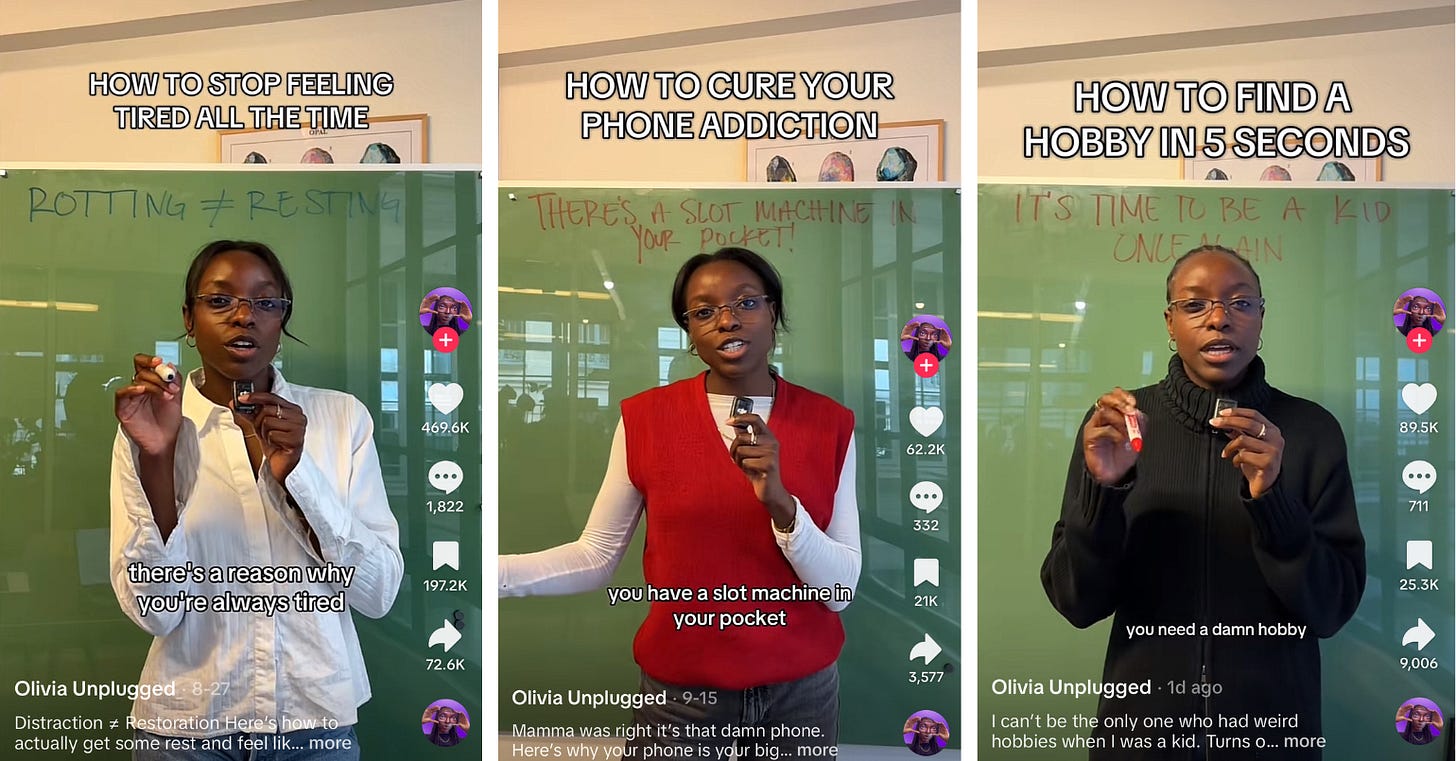
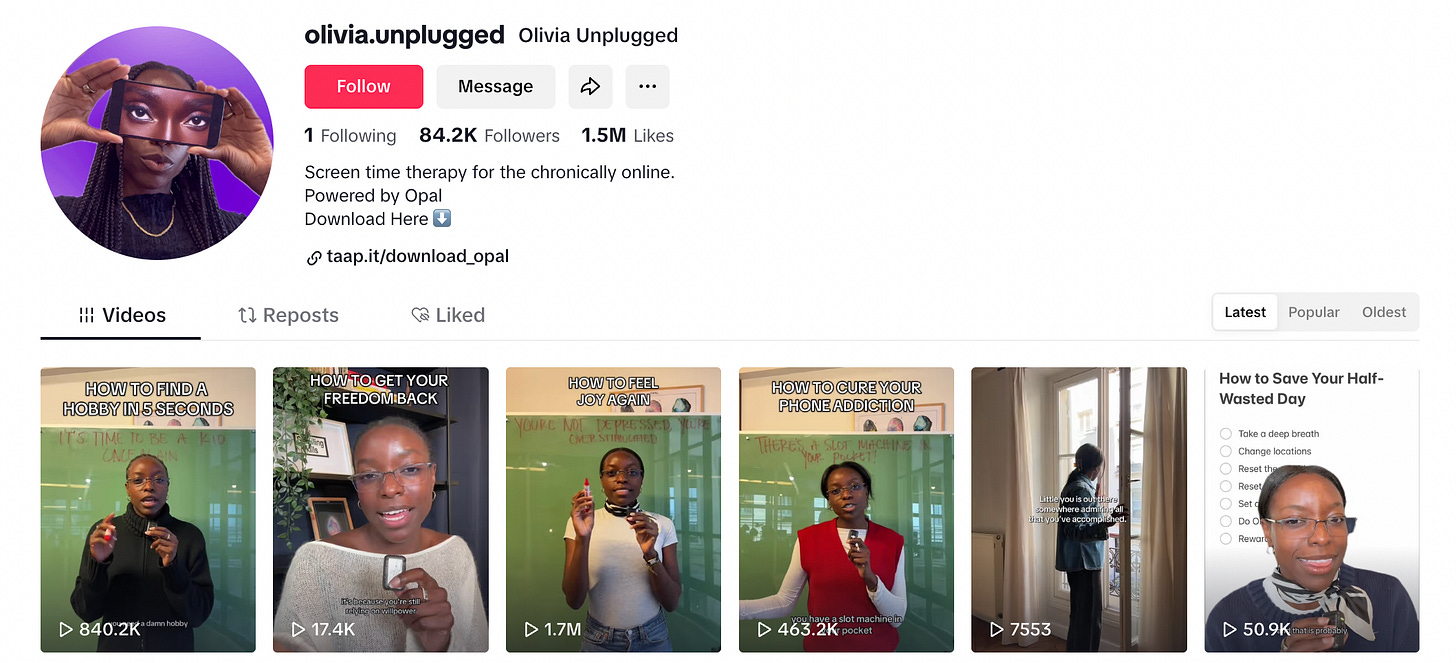
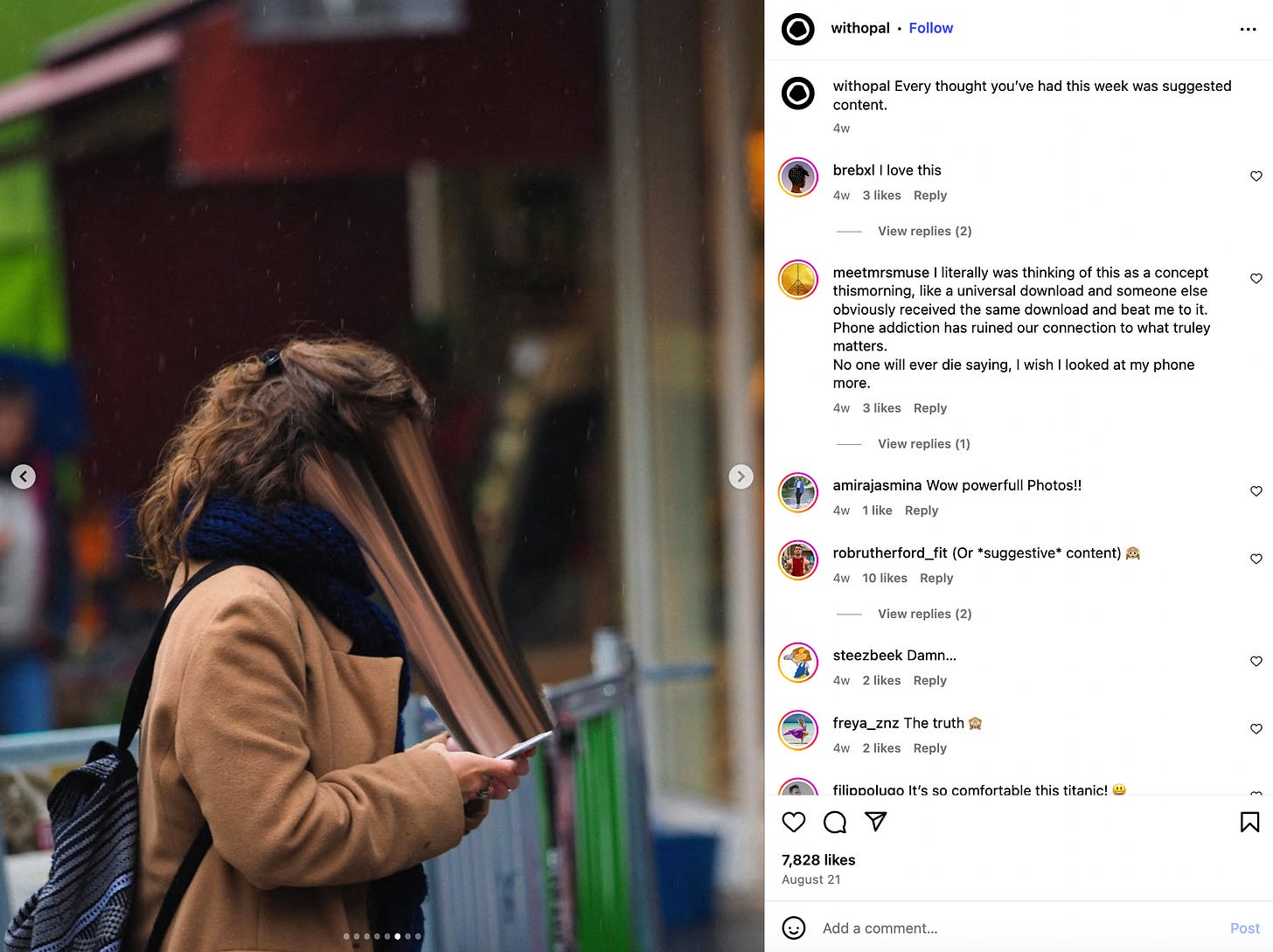

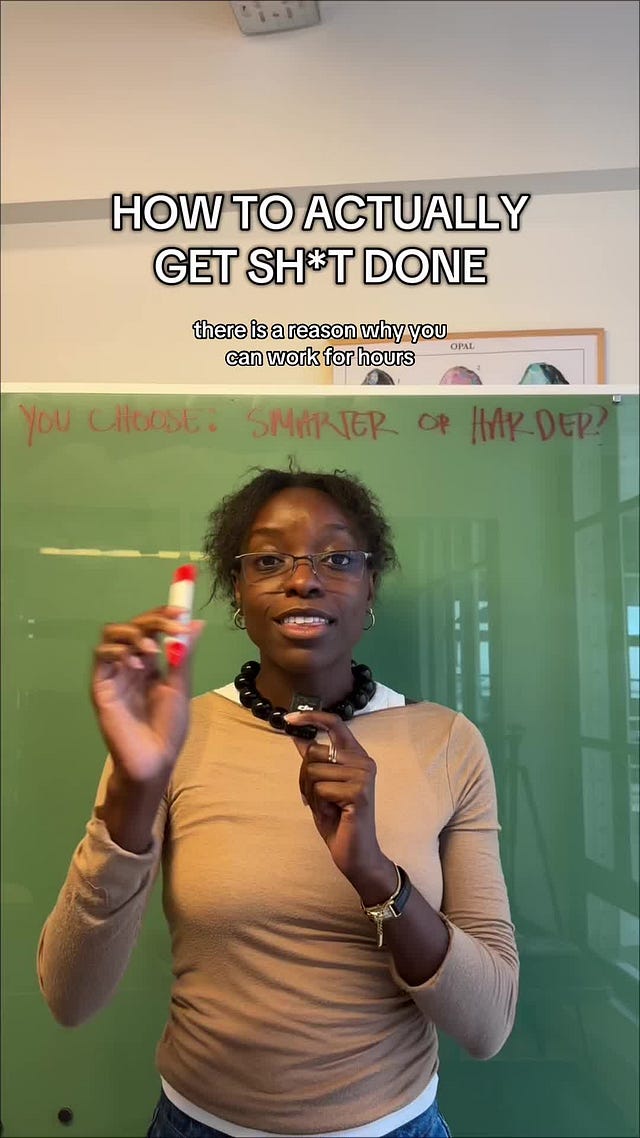


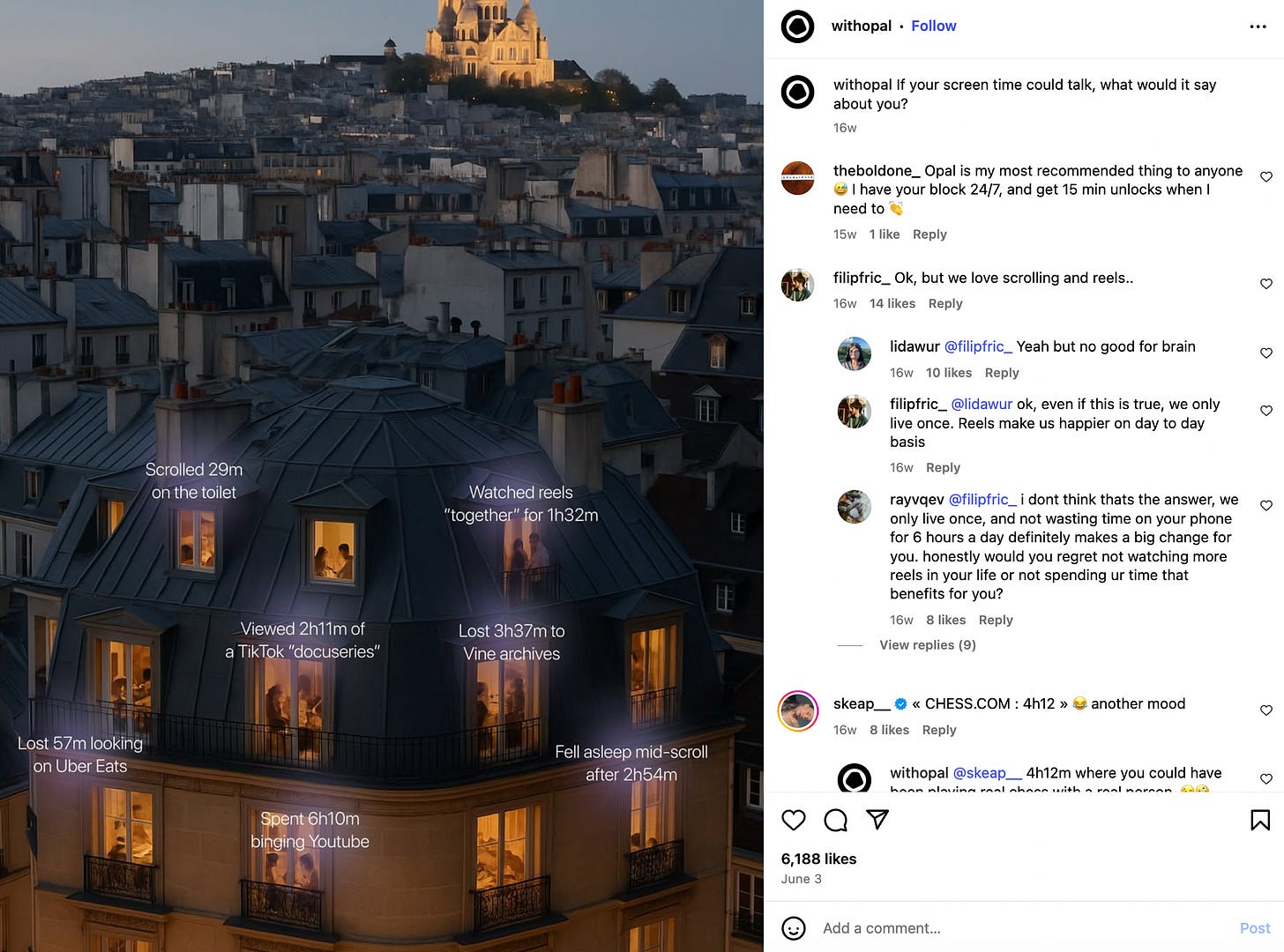
i haven't seen her tiktoks yet but i'm sure i will now!
So intrigued by Opal and by Olivia Unplugged! What a fascinating read.